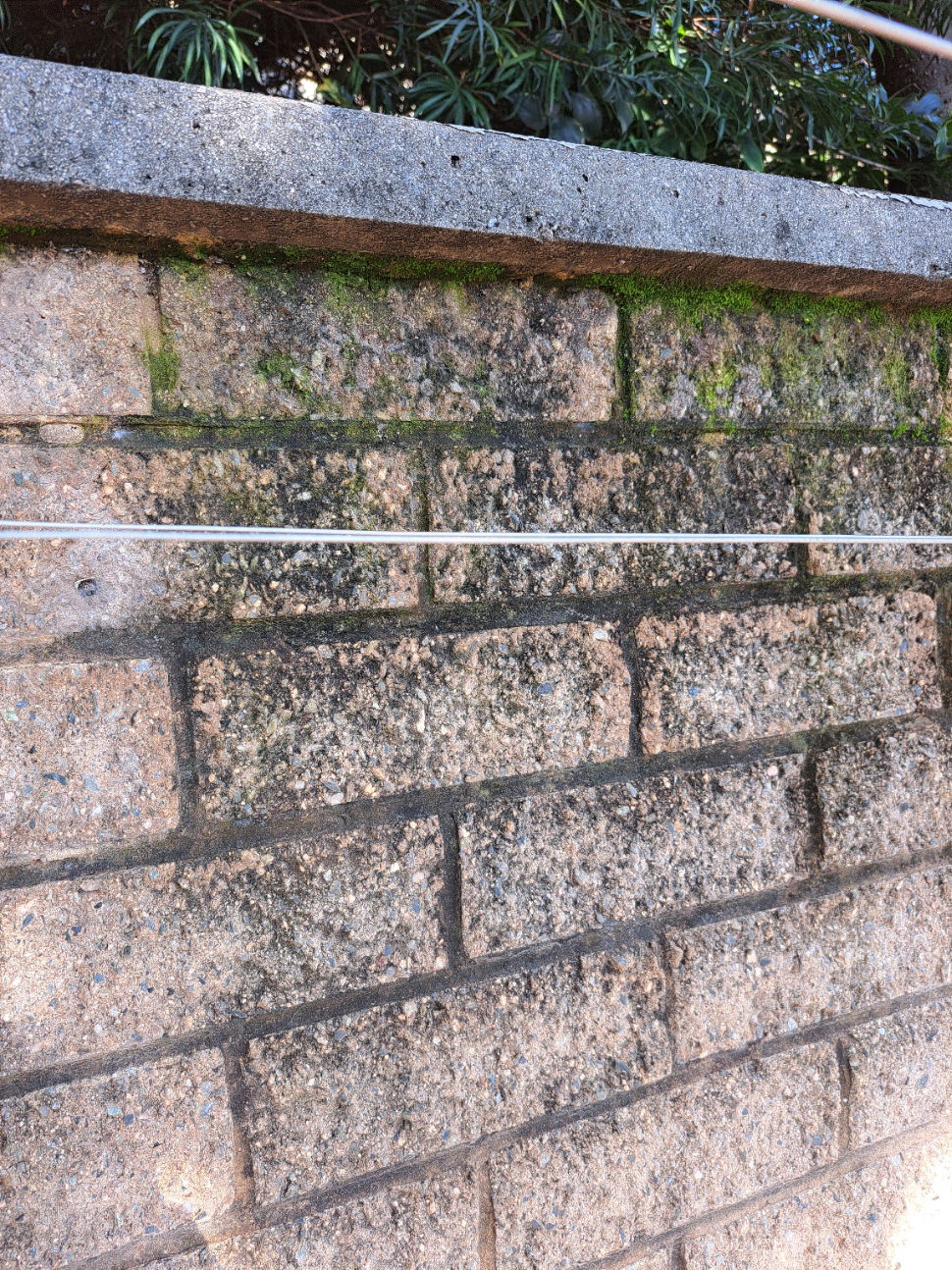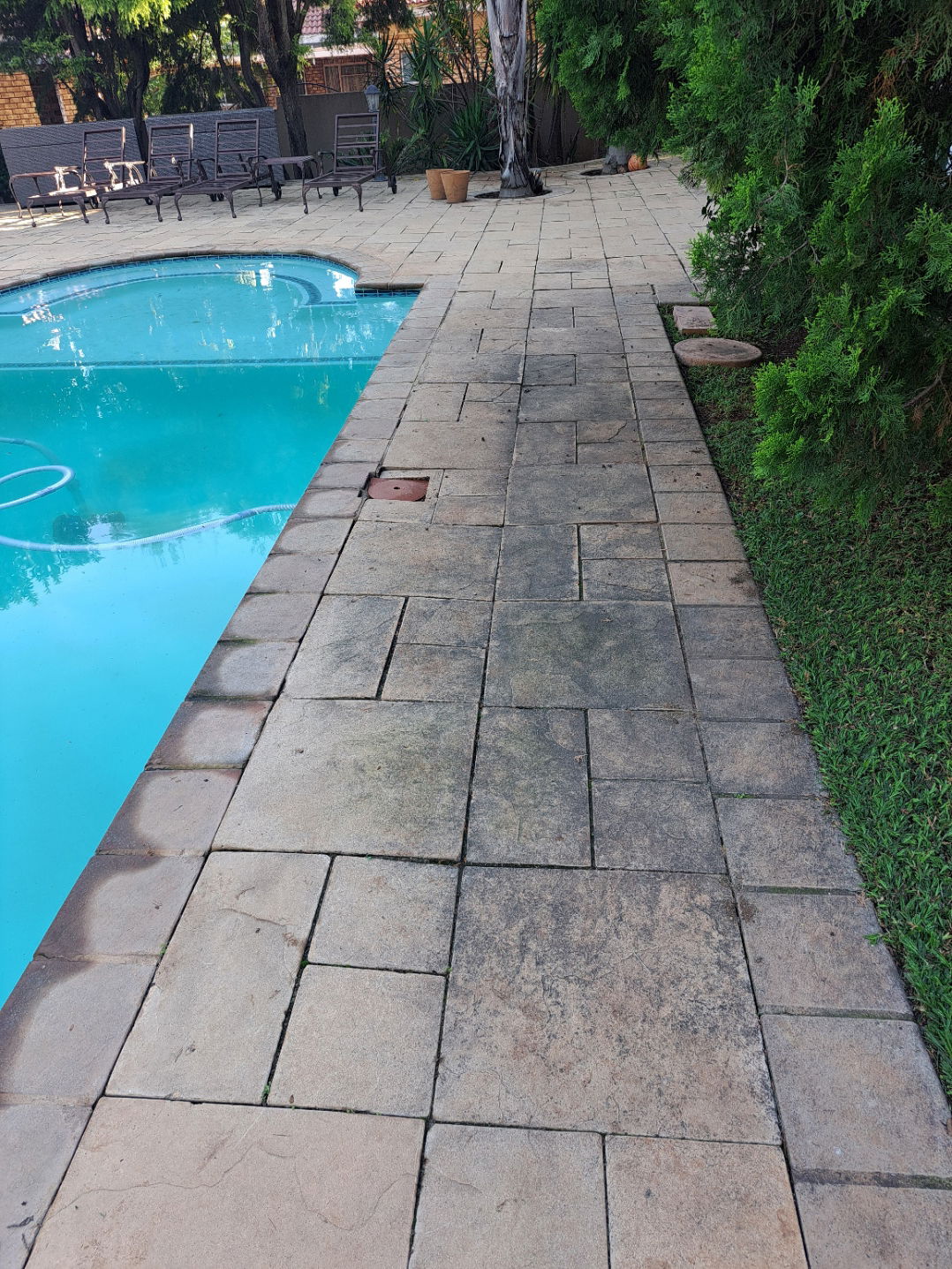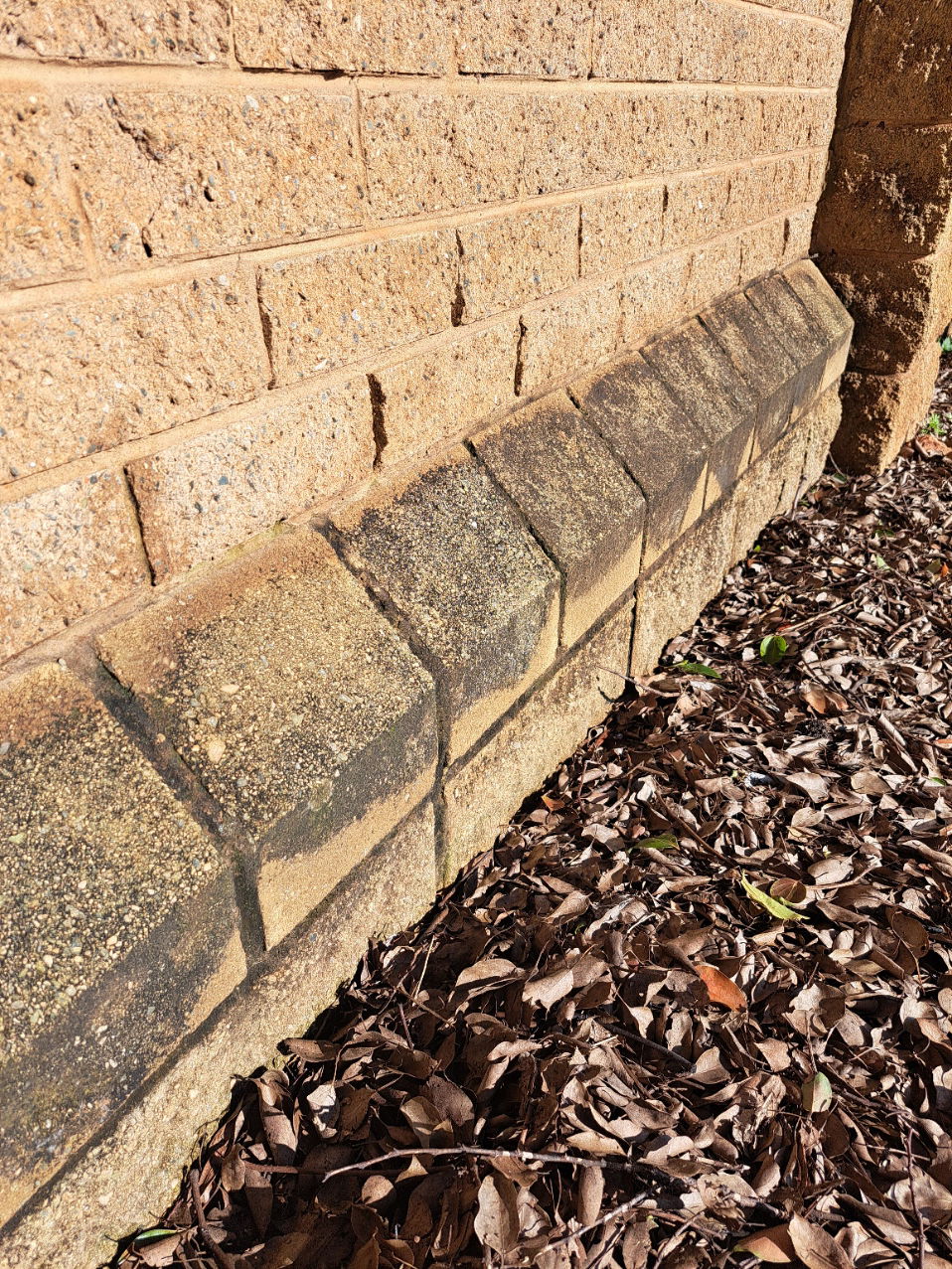F.A.Q
Where can I see your customer reviews?
You can head over to our Google Business Page to see these.
Where can I see pics of the work you've done?
Please head over to our Google Business Page or Instagram or Facebook Page to see our before and after pics. You could also have a look at our Image Comparison Page on our website.
How do you price your pressure washing services?
We have a minimum charge of R1250. Upwards of that, we work on a price per square meter which will include travel within a 35km radius of Centurion.
Prices per square meter can vary from R16 to R32.
If you have just done some building and need a "Post build clean" we add a chemical treatment to the price per SQM.
If you have a lot of organic growth like moss & algae, black algae or lichen, this will also be added as a chemical treatment.
Working at height(roofs), will also factor into what we charge.
Regular cups of free coffee while we work may also influence the price.
Prices per square meter can vary from R16 to R32.
If you have just done some building and need a "Post build clean" we add a chemical treatment to the price per SQM.
If you have a lot of organic growth like moss & algae, black algae or lichen, this will also be added as a chemical treatment.
Working at height(roofs), will also factor into what we charge.
Regular cups of free coffee while we work may also influence the price.
What is Re-Sanding and why should I have it done?
When you pressure wash pavers (like those used in driveways or patios), it displaces the sand between the joints. This displacement can compromise the stability of the entire system, causing the pavers to shift and become uneven. Even if the sand displacement isn’t visible, it’s still crucial to address it.
An upgrade from Kiln dried sand is Polymeric sand. This hardens once wet and is a superior joint filler.
- Kiln dried jointing sand ensures exceptional joint stabilization for segmented paving applications, including patios, driveways, and commercial pavements.
- Re-sanding significantly reduces weed growth by preventing seeding and deters mining ants. Most importantly, the sand remains firmly in place between the bricks, contributing to a much more durable pavement over the long term.
An upgrade from Kiln dried sand is Polymeric sand. This hardens once wet and is a superior joint filler.
How and when do I need to pay you?
We accept payment via EFT to our FNB Business account.
Payment must be made on completion of the project.
In some cases, we may require a 50% deposit.
If you wish to retain our services on a regular basis, we are open to discuss this.
Payment must be made on completion of the project.
In some cases, we may require a 50% deposit.
If you wish to retain our services on a regular basis, we are open to discuss this.
What sets you apart from other exterior cleaners?
Our equipment is all new and in a good, serviceable condition which means no time-wasting breakdowns and no oil leaks from our power washer on your premises.
We research continuously and use the latest methods and equipment to provide the best results for our customers.
We personalise each cleaning solution to our customers unique requirements and address all their concerns before we begin.
Our vehicles are in good condition and will not be an eyesore to your neighbors while parked at your premises! (They don't leak oil either...)
We believe your customer experience with us, from first contact and onwards will be a deeply satisfying one!
Our 5-star Google customer rating is really important to us so in order to maintain that and grow our number we HAVE TO provide a service that matches, and we do!
We research continuously and use the latest methods and equipment to provide the best results for our customers.
We personalise each cleaning solution to our customers unique requirements and address all their concerns before we begin.
Our vehicles are in good condition and will not be an eyesore to your neighbors while parked at your premises! (They don't leak oil either...)
We believe your customer experience with us, from first contact and onwards will be a deeply satisfying one!
Our 5-star Google customer rating is really important to us so in order to maintain that and grow our number we HAVE TO provide a service that matches, and we do!
Can high pressure cleaning damage my property?
High pressure cleaning can cause damage if done by inexperienced operators on certain surfaces like wood, vinyl, painted surfaces or asphalt shingles.
At 8 Day, we make sure that we inspect and test each surface we have to clean before we begin, regardless of the substrate.
High pressure washing is an extremely effective cleaning method when done by an experienced operator.
At 8 Day, we make sure that we inspect and test each surface we have to clean before we begin, regardless of the substrate.
High pressure washing is an extremely effective cleaning method when done by an experienced operator.
I have a high-pressure cleaner. What makes yours so special?
Most "high-pressure" cleaners sold from retail outlets will be fine for cleaning your car or offroad bike and may even be able to do some brick work.
The difference comes in with water flow or liters per minute. A 150 bar, 15+LPM machine (commercial unit) will do a much more effective cleaning job than a 200bar 8LPM machine.
The pressure pump on our unit is driven by a petrol-powered engine capable of delivering the horsepower required.
An off the shelf retail unit will not be able to be used for 3-5 hours at a time without shortening its life expectancy drastically. Our machine can easily handle this type of workload.
Happy now?:-)
The difference comes in with water flow or liters per minute. A 150 bar, 15+LPM machine (commercial unit) will do a much more effective cleaning job than a 200bar 8LPM machine.
The pressure pump on our unit is driven by a petrol-powered engine capable of delivering the horsepower required.
An off the shelf retail unit will not be able to be used for 3-5 hours at a time without shortening its life expectancy drastically. Our machine can easily handle this type of workload.
Happy now?:-)
Do I need to prepare anything before you arrive?
If you have any pot plants or furniture on the area to be cleaned, these can be moved out the way. That also means your halfway built, 10,000-piece puzzle on the patio table.
Anything moveable that can be affected by moisture.
If you need us to move anything it may add to the price of the project.
Pets, unless they can breathe under water.
And most definitely a garden tap with semi decent pressure.
Anything moveable that can be affected by moisture.
If you need us to move anything it may add to the price of the project.
Pets, unless they can breathe under water.
And most definitely a garden tap with semi decent pressure.
How often do I need to get an exterior cleaner in?
Every month OfCourse! Just kidding.
This will depend on your environment. For example, a house with big trees covering the roof and paved areas will need more regular cleaning due to moss and algae build up on the roof and driveways as well as regular gutter cleaning to remove all the leaves.
If you agree to get us in on a regular basis, we will offer a 10% discount. Not kidding.
This will depend on your environment. For example, a house with big trees covering the roof and paved areas will need more regular cleaning due to moss and algae build up on the roof and driveways as well as regular gutter cleaning to remove all the leaves.
If you agree to get us in on a regular basis, we will offer a 10% discount. Not kidding.
Are the chemicals you use safe for the environment?
They are all SABS approved and the experts reckon they will not harm the environment (as far as we know). Just don't ask us to have a sip of our Biocide.
We will gladly supply Product data and Product safety sheets on request.
If you have any concerns, you are welcome to discuss these with us over some Biocide.
We will gladly supply Product data and Product safety sheets on request.
If you have any concerns, you are welcome to discuss these with us over some Biocide.
Can you completely remove oil stains?
Man, I'd love to say yes and just hope you don't call me the next day after everything has dried and the dreaded stain is still visible.
Oil stains, particularly motor oil and even worse if it's a diesel vehicle, are never going to be removed completely, especially from unsealed porous surfaces like cement pavers, bricks or concrete surfaces.
You see motor oil gets mixed with exhaust gases during the combustion process which turns it into a nasty, black, hydrocarbon rich, insoluble liquid which seeps into your spongy brick and is there to stay, just like some family members.
It's not all doom and gloom though as we have some cool products (we discovered) that will do a very good job of lightening that stain.
Oil stains, particularly motor oil and even worse if it's a diesel vehicle, are never going to be removed completely, especially from unsealed porous surfaces like cement pavers, bricks or concrete surfaces.
You see motor oil gets mixed with exhaust gases during the combustion process which turns it into a nasty, black, hydrocarbon rich, insoluble liquid which seeps into your spongy brick and is there to stay, just like some family members.
It's not all doom and gloom though as we have some cool products (we discovered) that will do a very good job of lightening that stain.
How do you actually clean Solar panels?
A solar panel is just like a big window except its much tougher and a lot more resilient.
Our approach is first to determine the dirt on the panel. If it's light dust we will use pure water and a water fed brush, agitate the dirt and then rinse.
For heavier soiling like bird excrement (Hadada's can make a huge mess!), we will use a light soap solution to ensure there is no residual rings or marks. Following that, we will brush and rinse with pure water.
Our approach is first to determine the dirt on the panel. If it's light dust we will use pure water and a water fed brush, agitate the dirt and then rinse.
For heavier soiling like bird excrement (Hadada's can make a huge mess!), we will use a light soap solution to ensure there is no residual rings or marks. Following that, we will brush and rinse with pure water.
What is Gloecapsa Magma and why should I care about it?


 Understanding Gleocapsa Magma and Its Impact on South African Roofs, Walls and Paved or Concreted Surfaces.
Understanding Gleocapsa Magma and Its Impact on South African Roofs, Walls and Paved or Concreted Surfaces.If you've noticed dark streaks or patches creeping across your paving or walls, chances are you're dealing with Gleocapsa Magma—a type of bacteria that thrives in warm, humid climates. While commonly mistaken for dirt or mildew, this microorganism is far more problematic than it looks.
What is Gleocapsa Magma?
Gleocapsa Magma is a cyanobacteria species that survives by feeding on limestone found in cement and concrete materials, particularly pavers, walls and decorative cement. It forms those unsightly black streaks and blotches you see on walls or driveways, creating the impression that your home is dirty or neglected. But the issue is more than just cosmetic.
The Damage It Can Cause
South Africa's climate—especially in humid coastal areas and regions with frequent rainfall—provides the perfect environment for this bacteria to thrive. Over time, it can weaken concrete surfaces, causing:
- Premature deterioration, leading to costly repairs.
- Reduced reflective properties, meaning your surfaces absorb more heat, increasing sun damage and excessive cooling costs when roofs are infected.
- Spread to neighboring homes, especially in tightly packed residential areas.
Preventing the spread of Gleocapsa Magma requires proactive maintenance. Here’s what homeowners in South Africa can do:
- Regular cleaning using professional soft washing and pressure washing techniques that eliminate bacteria without damaging roofing materials.
- Ensuring proper drainage to prevent excess moisture build-up.
Ignoring Gleocapsa Magma can lead to serious structural issues, reducing the lifespan of your roof, walls and paved surfaces, and affecting your property’s curb appeal. South African homeowners, especially those in damp or coastal areas, should remain vigilant and incorporate regular surface maintenance into their home care routine.